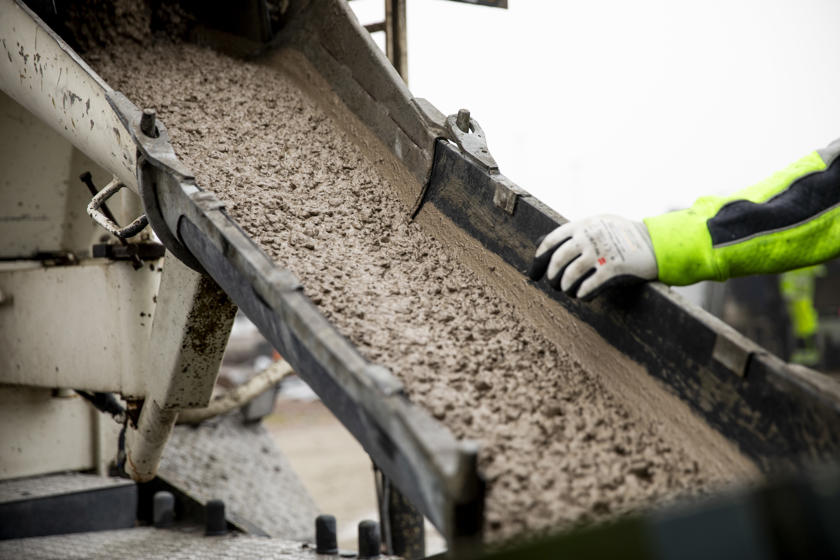The Fehmarnbelt project is the first civil engineering project to test the use of CO2-reduced concrete in the construction of mega projects of the future.
The contractor consortium, Femern Link Contractors, FLC, is conducting the trial casting using a completely new type of concrete at a specially allocated area at the tunnel construction site in Rødbyhavn.
The trial casting is part of a larger collaboration on the concrete of the future, known as CALLISTE, in which Femern A/S, the developer behind the Fehmarnbelt project, is involved together with Aalborg Portland, the Technological Institute, several universities, concrete suppliers and public and private developers.
"We have strict requirements as regards strength and durability for the construction of mega projects, such as the Fehmarnbelt tunnel, and this is of particular relevance when building in the marine environment. We’re also firmly focused on reducing the CO2 footprint from our construction project through new technologies and we want to give additional impetus to the development of concrete of the future,” says Kim Smedegaard Andersen, Deputy Technical Director at the Fehmarnbelt project.
Participating from the cement industry is Aalborg Portland, a sub-supplier of cement to the Fehmarnbelt tunnel.
Aalborg Portland has developed a type of cement known as Futurecem, which can reduce the CO2 footprint from concrete production by 25 per cent compared to traditional concrete. This is achieved by replacing some of the clinker content in the cement with specially treated clay and limestone. The CALLISTE collaboration is conducting applied research and aims to develop this technology further. The aim of the collaboration is to halve the need for cement in concrete while maintaining high strength and durability.
The trial casting at the Fehmarnbelt project is the first time that a type of concrete containing cement has been attempted where approximately 50 per cent of cement clinker has been replaced by a special combination of clay and limestone. This significantly reduces the CO2 footprint compared to the types of cement normally used in Denmark,” says Pernille Nyegaard, Centre Project Manager at the Technological Institute.
"This is the first time for us to cast with the new type of concrete on this scale, which means that we can investigate the concrete’s durability. The trial is important to demonstrate how the concrete performs in a real traffic environment with frost and salting,” says Pernille Nyegaard.
If the CALLISTE project achieves the expected results, it will open up the possibility for the new concrete, with a reduced CO2 footprint, to be used in future construction projects, where concrete production carries significant weight in the CO2 accounts.
"As a state-owned company, we bear a special responsibility to contribute to a greener construction industry and develop new solutions that reduce the CO2 footprint. We look forward to sharing the results of the CALLISTE project with our partners and contractors,” says Kim Smedegaard Andersen, Deputy Technical Director at the Fehmarnbelt project.
About the CALLISTE project
Supported by the Innovation Fund’s Investment (through the Grand Solutions programme) to the tune of DKK 21.6 million.
Project partners
Technological Institute (project manager)
Aalborg Portland A/S
Technical University of Munich
Aarhus University
Denmark’s Technical University
Unicon A/S
CHR Concrete A/S
IBF A/S
Femern A/S
FB Gruppen A/S
Danish Road Directorate
Dansk Beton (Danish Concrete)

